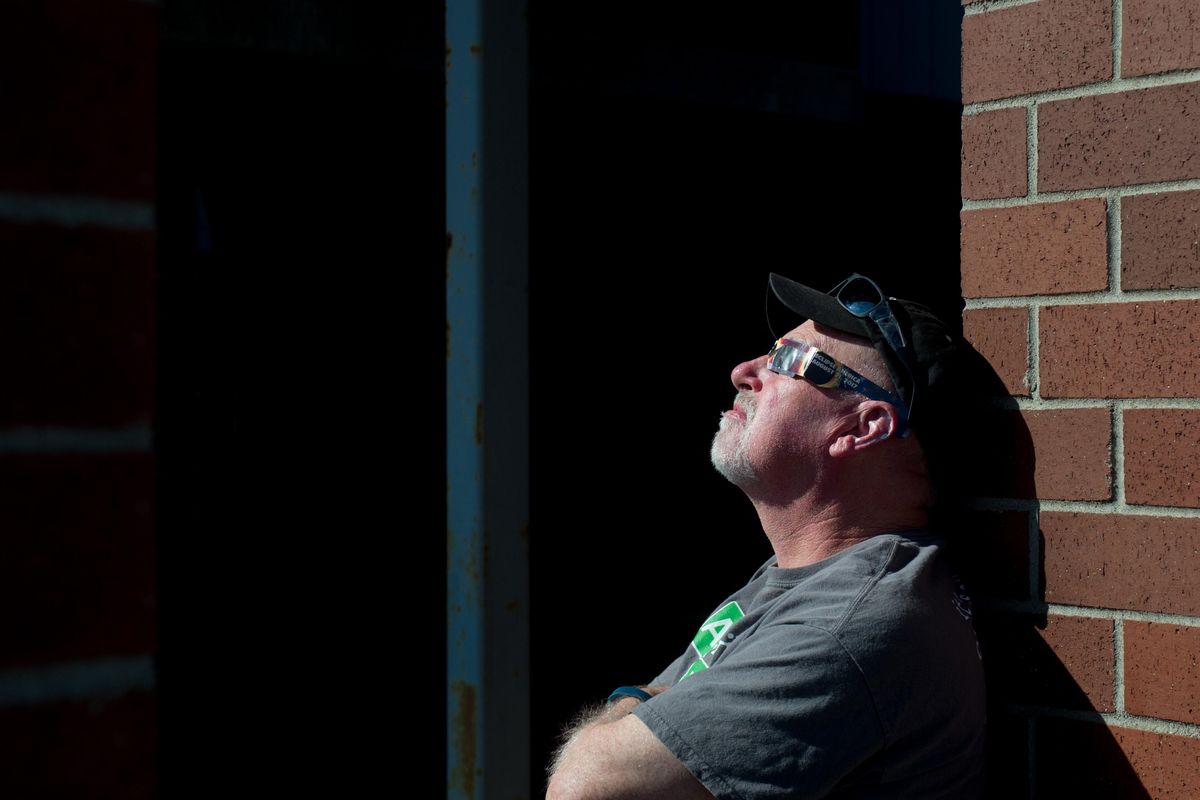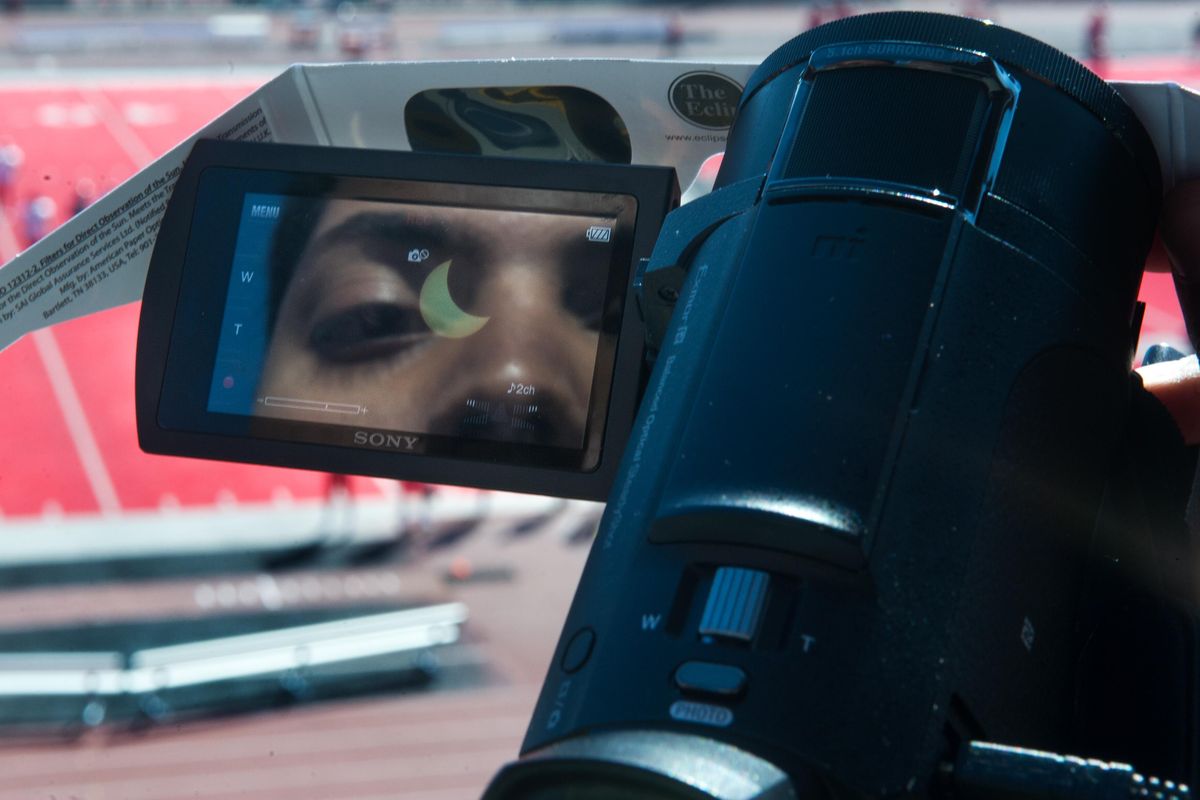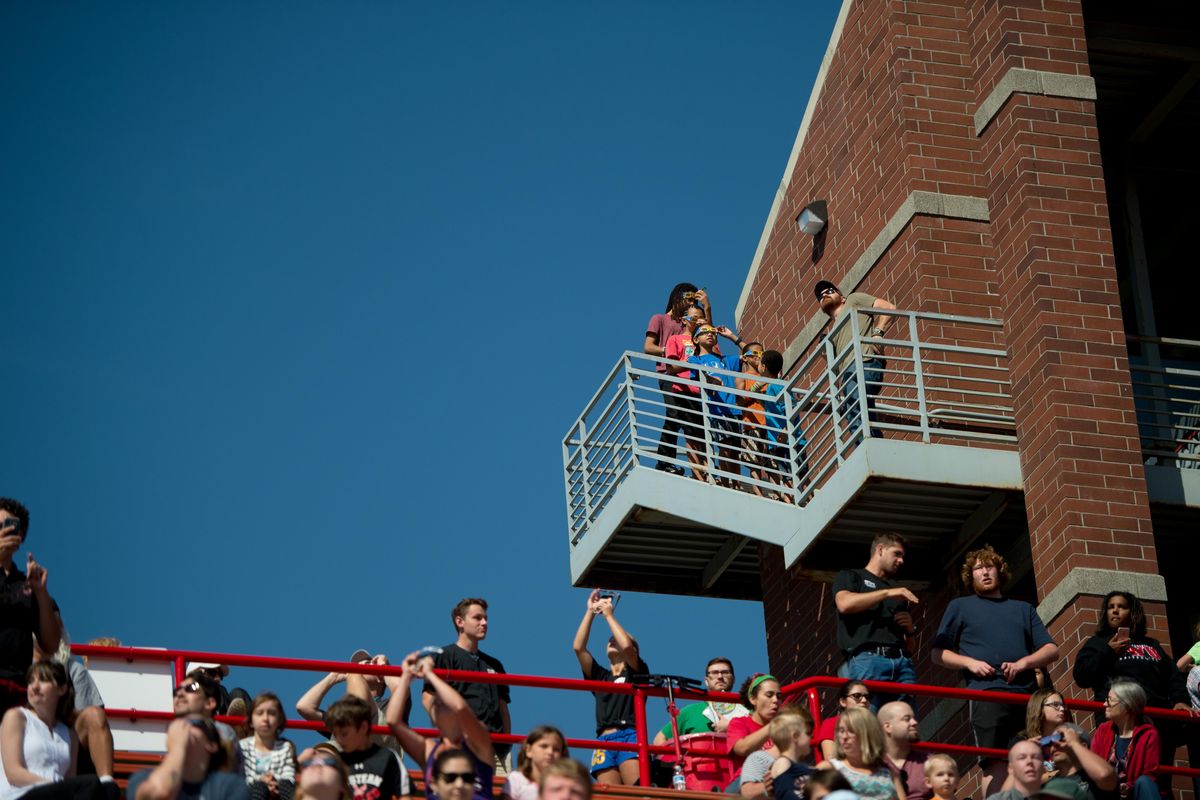Bananas, cats and cookies come into view as eclipse watchers crowd bleachers at EWU’s Roos Field
Sreenath Panchagnula uses a pair of dark glasses as a filter to film a partial solar eclipse during an eclipse watch party held by the EWU Astronomy Club on Monday, Aug. 21, 2017, at Roos Field in Cheney, (Tyler Tjomsland / The Spokesman-Review)Buy a print of this photo
Pulling his cardboard eclipse glasses tight around his face, Cole Cullen squinted at a crescent of sun and counted down the minutes.
From his vantage point in the football bleachers at Eastern Washington University, the 8-year-old wanted to see the sun when it was most obscured at about 10:30 a.m. Monday.
“It started out looking like a cat,” he said, matter-of-factly explaining how the points of the crescent looked like ears. “And as the moon started coming in, it started looking like a banana!”
Cullen and his mother were among hundreds who piled into the bleachers at Roos Field to watch the historic solar eclipse. Observers in Cheney witnessed the moon block out nearly 91 percent of the sun’s surface, causing a noticeable drop in temperature.
“It’s cooler, and it’s a little dimmer on the field,” Jim Richard said, pointing at the Eagles’ distinctive red football turf. “The red isn’t so bright.”
Eclipse watchers lined up in the parking lot before 9 a.m. They were mostly locals, EWU students and families with children – casual enthusiasts who didn’t embark on road trips into the path of totality.
Scott Smith said he went to the viewing event because he happened to have the day off work.
“I figured I might as well come up and see it,” he said, “all two minutes of it.”
Many watched the eclipse through special glasses and homemade pinhole cameras, and a few donned welding masks. At least one person tried to watch through two pairs of standard sunglasses. Some were more focused on the field, where the football team went on practicing.
Some found clever ways to modify their cameras. Rather than shell out $100 for a special filter, photographer Bridget Mayfield covered her lens with a cheap piece of reflective plastic film – a trick she learned from reading several blogs.
EWU’s astronomy club also set up several telescopes for visitors to use. Club member Matthew Sheldon handled a special H-alpha telescope, which showed the sun as a candy-red silhouette against a solid black background.
“This telescope eliminates all wavelengths of light except for a very specific one,” Sheldon said. “As a result, it can only really be used to look at the sun.”
Tina Christianson, a science teacher at Westview Elementary School, brought what she described as a far less advanced telescope, which projected the shadow of the eclipse onto a nearby wall. She uses the device to teach her students astronomy.
EWU student Wade Khalaf wore a wide grin after peering through a telescope during an early stage of the eclipse, when the sun looked looked like a cookie with a large bite taken out of it.
“It’s amazing,” Khalaf said. “I’m very excited about this.”
Cheryl Holman said she had never been much of an astronomy buff, but the hype surrounding the eclipse stoked a new interest in planets and constellations.
“What an event,” she said, “to see this even once in your lifetime.”












